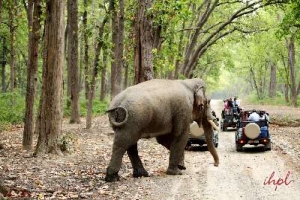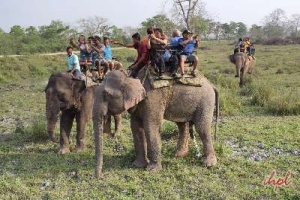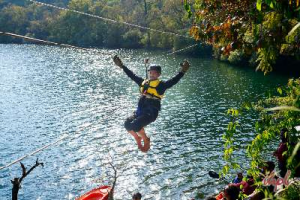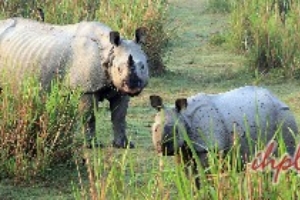The forest in the Corbett National Park area, which now preserves many rare species of Indian Wildlife, was originally the private property of the Kings of Tehri Garhwal. When the Gorkhas who had captured Garhwal in 1804 and had ruled it for twelve years were driven out by the British, this part of the state was given to the British in 1820 for their assistance. For the next 40 years the British exploited these forests for their timber. Healthy forests were cleared for growing ‘Teak’ which were needed for Railway sleepers.
It was Major Ramsay, the officer in charge of this area, who in 1858 took the first step in arresting the wanton destruction. Farming was stopped and cattle were banned. Further a system was put into place where timber could not be removed without a license. In 1868 control of this area went into the hands of the Forest Department. In 1879 these forests became Reserve Forests which meant that felling of trees for timber was now restricted. This resulted in the forest and its wildlife showing signs of improvement.
The first proposal for forming a game sanctuary came in 1907 by Michael Keen an officer with the Forest Department. This was rejected outright. In 1916 and 1917 two forest officers, E.R.Stevens and his successor, E.A.Smythies made attempts to have it declared a game sanctuary.
Both were turned down. It was only later when Smythies became conservator that he consulted Jim Corbett, who knew the area like the back of his hand, regarding the possible boundaries for a proposed national park to preserve Indian Wildlife. The 1930s saw many a viceroy, governor-general, and other dignitaries visiting this area to get themselves a tiger. They would bag their tigers from elephant-back and high machans in elaborate tiger shoots. It was more of an elaborate entertainment for them.
Hunters who abhorred this form of sport and the massacre which was happening, prevailed on the then Governor of the United Provinces, Sir Malcolm Hailey who supported their stance, and in 1934 had it declared a sanctuary. Soon after, Governor Hailey and Sir Smythies proposed upgrading the sanctuary to a national park. The U.P. National Park Act was finally enacted on August 6th 1936, and India’s first (and the world’s third ) national park came into being. The park was spread over an area of 323.75 sq kms (122 sq miles) and was named as Hailey National Park. After independence, the park was renamed in 1952 as the Ramganga National Park. When Jim Corbett died on 19th April 1955 in Kenya, the Government as a tribute renamed it as Corbett National Park in 1957, in honor of this leading conservator of Indian wildlife.
On April 1, 1973 India’s ambitious tiger protection programme Project Tiger, a collaboration between World Wildlife Fund and the Government of India, was launched from here.
In 1991 the Corbett Tiger Reserve was formed with the addition of the Sonanadi Wildlife Sanctuary, and buffer zones carved out of the Kalagarh, Ramganga and Terrai West forest divisions.
To commemorate the Diamond Jubilee of Corbett National Park, a visitor centre has been constructed at Dhangarhi, the main entrance to Corbett National Park. Here activities are organized for the local villagers and their children, and information provided to visitors.
Corbett National Park has become the first national park to have its own in-house magazine, which was launched in 1994. The newsletter gives information on the park. It is a quarterly publication with alternate issues in Hindi and English, the former being distributed free of cost to the villagers, school children and staff.
In 1994 the Corbett Bird watching programme was launched to mobilize support for the protection of birds and their habitat.
Corbett National Park is one of the thirteen protected areas covered by World Wildlife Fund (WWF) under their Terai Arc Landscape Programme. The programme aims to protect 3 of the 5 terrestrial flagship species viz tiger (Panthera tigris), Asia Elephant (Elephas maximus) and the Greater one-horned rhinoceros (Rhinoceros Unicornis) by restoring forest corridors that would link 13 protected areas of Nepal and India to facilitate Indian wildlife movement.












